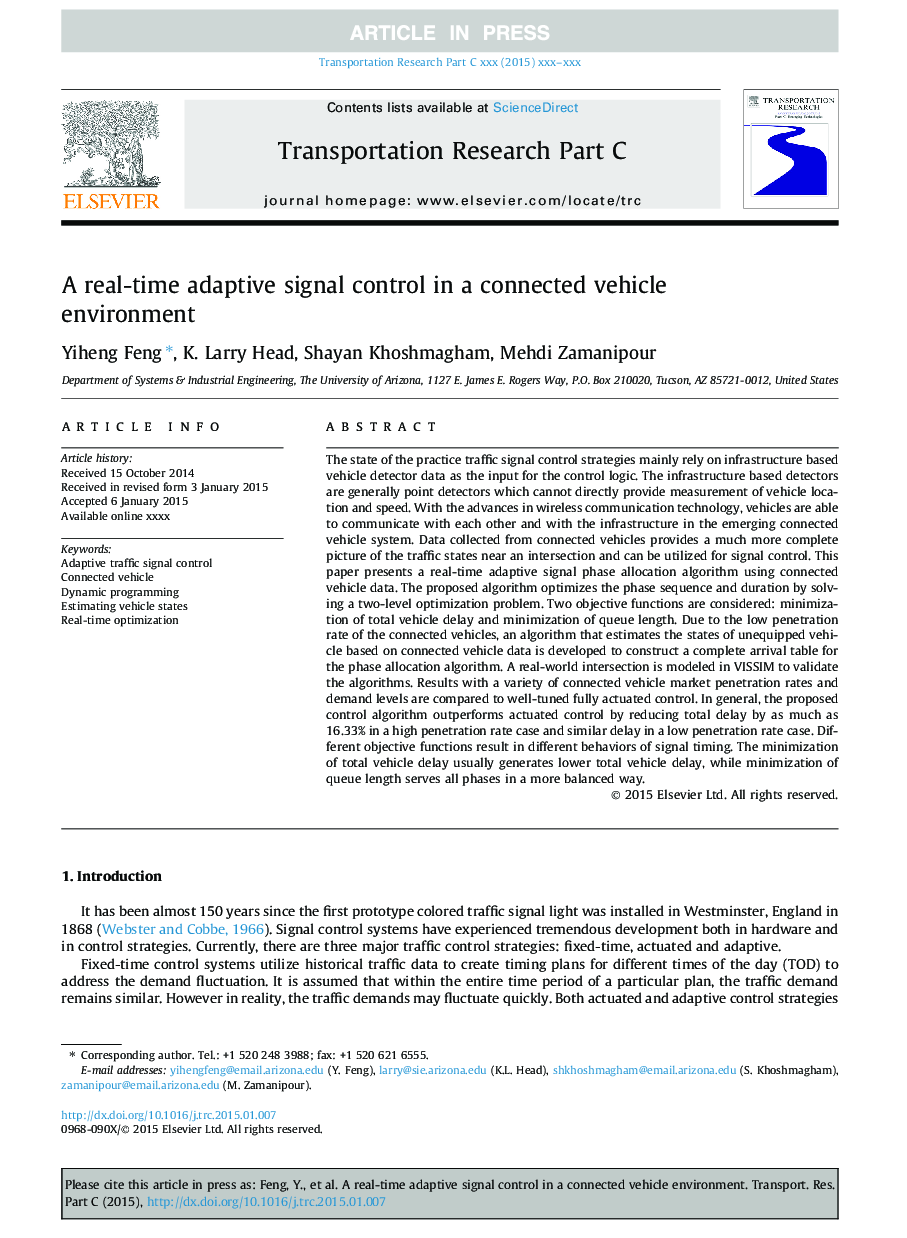| Article ID | Journal | Published Year | Pages | File Type |
|---|---|---|---|---|
| 6936853 | Transportation Research Part C: Emerging Technologies | 2015 | 14 Pages |
Abstract
The state of the practice traffic signal control strategies mainly rely on infrastructure based vehicle detector data as the input for the control logic. The infrastructure based detectors are generally point detectors which cannot directly provide measurement of vehicle location and speed. With the advances in wireless communication technology, vehicles are able to communicate with each other and with the infrastructure in the emerging connected vehicle system. Data collected from connected vehicles provides a much more complete picture of the traffic states near an intersection and can be utilized for signal control. This paper presents a real-time adaptive signal phase allocation algorithm using connected vehicle data. The proposed algorithm optimizes the phase sequence and duration by solving a two-level optimization problem. Two objective functions are considered: minimization of total vehicle delay and minimization of queue length. Due to the low penetration rate of the connected vehicles, an algorithm that estimates the states of unequipped vehicle based on connected vehicle data is developed to construct a complete arrival table for the phase allocation algorithm. A real-world intersection is modeled in VISSIM to validate the algorithms. Results with a variety of connected vehicle market penetration rates and demand levels are compared to well-tuned fully actuated control. In general, the proposed control algorithm outperforms actuated control by reducing total delay by as much as 16.33% in a high penetration rate case and similar delay in a low penetration rate case. Different objective functions result in different behaviors of signal timing. The minimization of total vehicle delay usually generates lower total vehicle delay, while minimization of queue length serves all phases in a more balanced way.
Related Topics
Physical Sciences and Engineering
Computer Science
Computer Science Applications
Authors
Yiheng Feng, K. Larry Head, Shayan Khoshmagham, Mehdi Zamanipour,
